How huge? I would really like to be in on such an order if possible.Yes, it was from Nesbitt. I guess it would take a huge order to get them to deal with the export hassle.
You are using an out of date browser. It may not display this or other websites correctly.
You should upgrade or use an alternative browser.
You should upgrade or use an alternative browser.
Some Australian terrestrials
- Thread starter emydura
- Start date

Help Support Slippertalk Orchid Forum:
This site may earn a commission from merchant affiliate
links, including eBay, Amazon, and others.
emydura
Well-Known Member
I love the helmet orchids (Corysanthes). There are three species of helmet orchids that grow in the region I live.
Mountain Helmet Orchid - Corysanthes grumula. The rarest of the three species. Seriously cute. It is the only one of the three I don't grow.
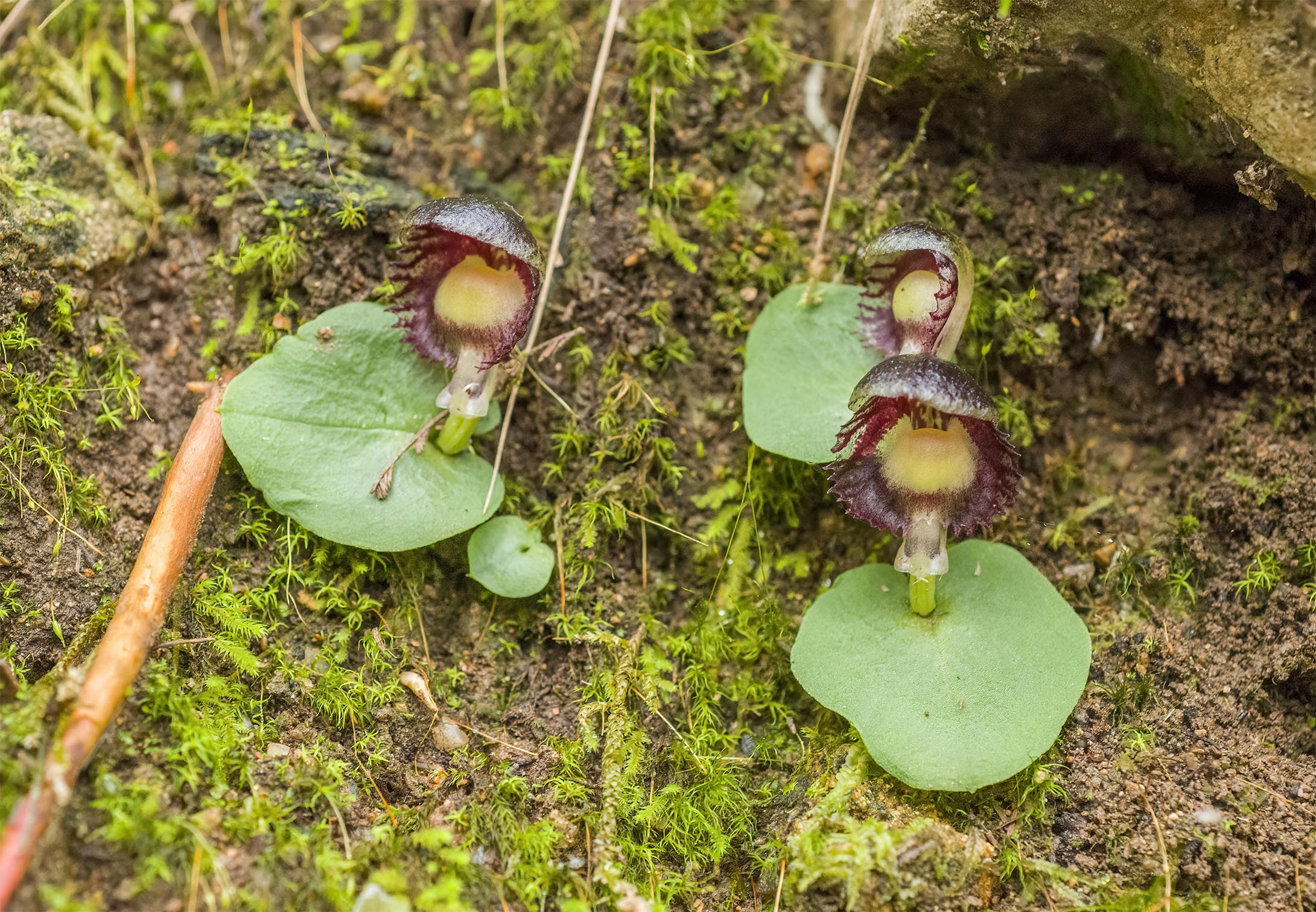
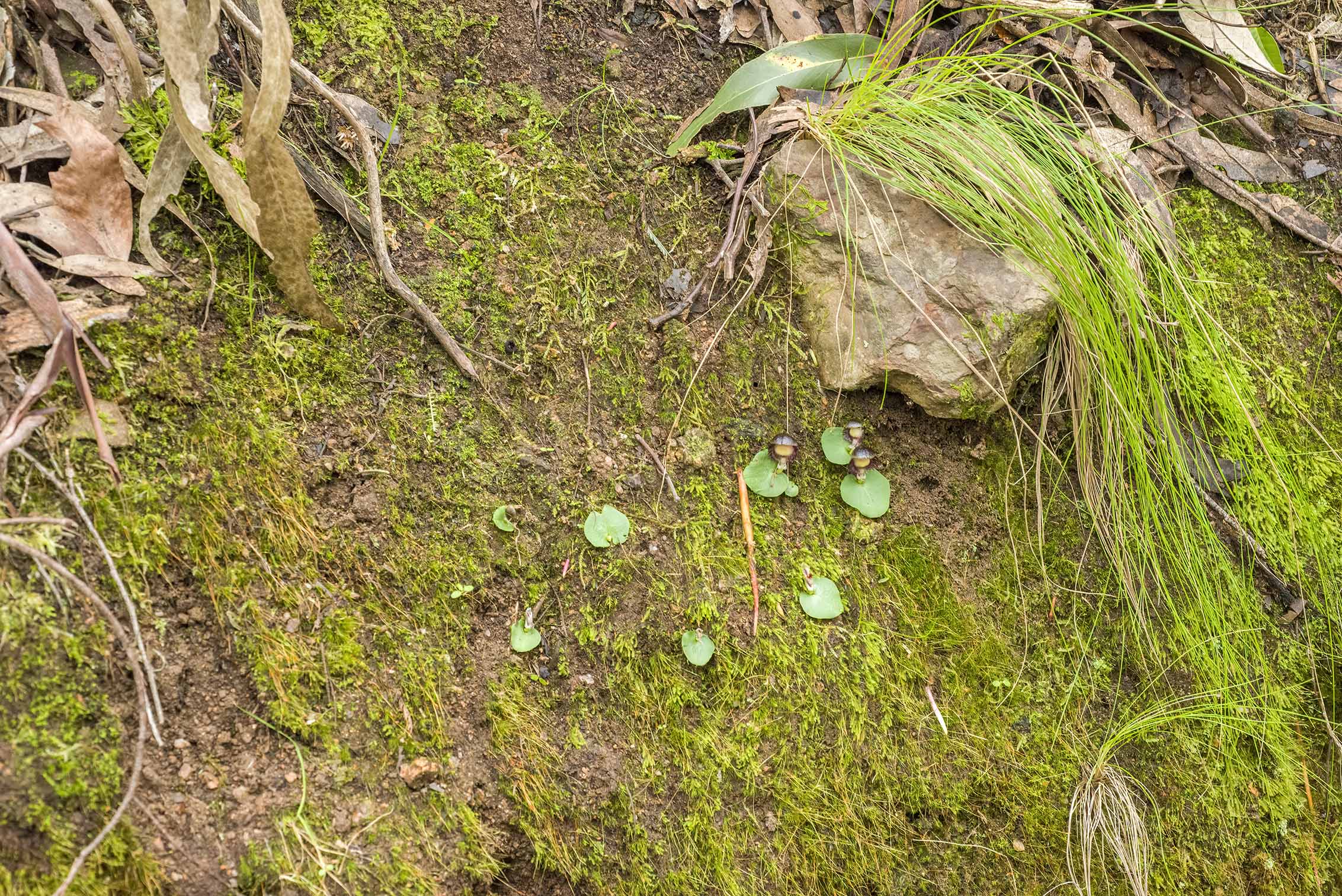
Slaty Helmet Orchid - Corysanthes incurvus. Commonly grown. Small in size.
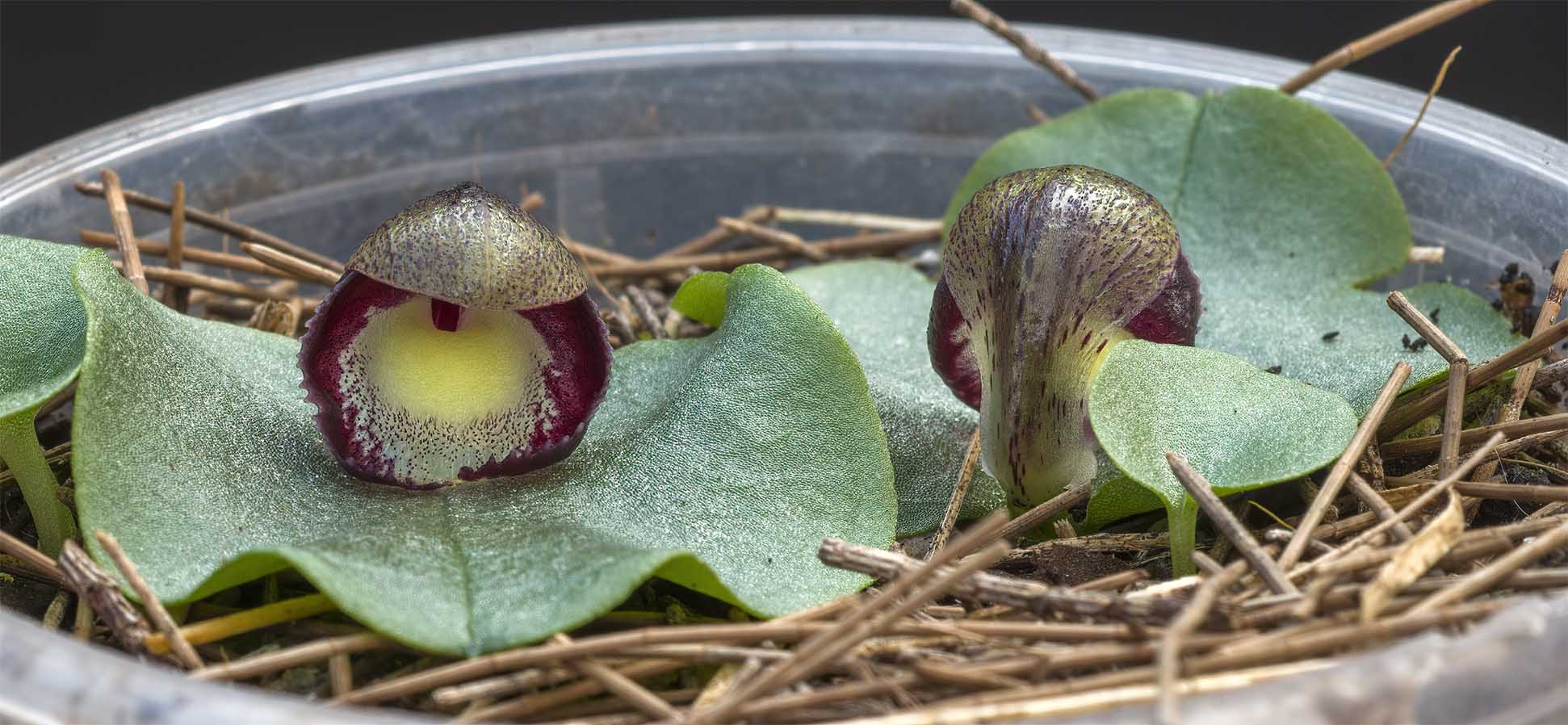
Bristly Helmet Orchid - Corysanthes hispida. I have shown this one before. The most spectacular of the three species.
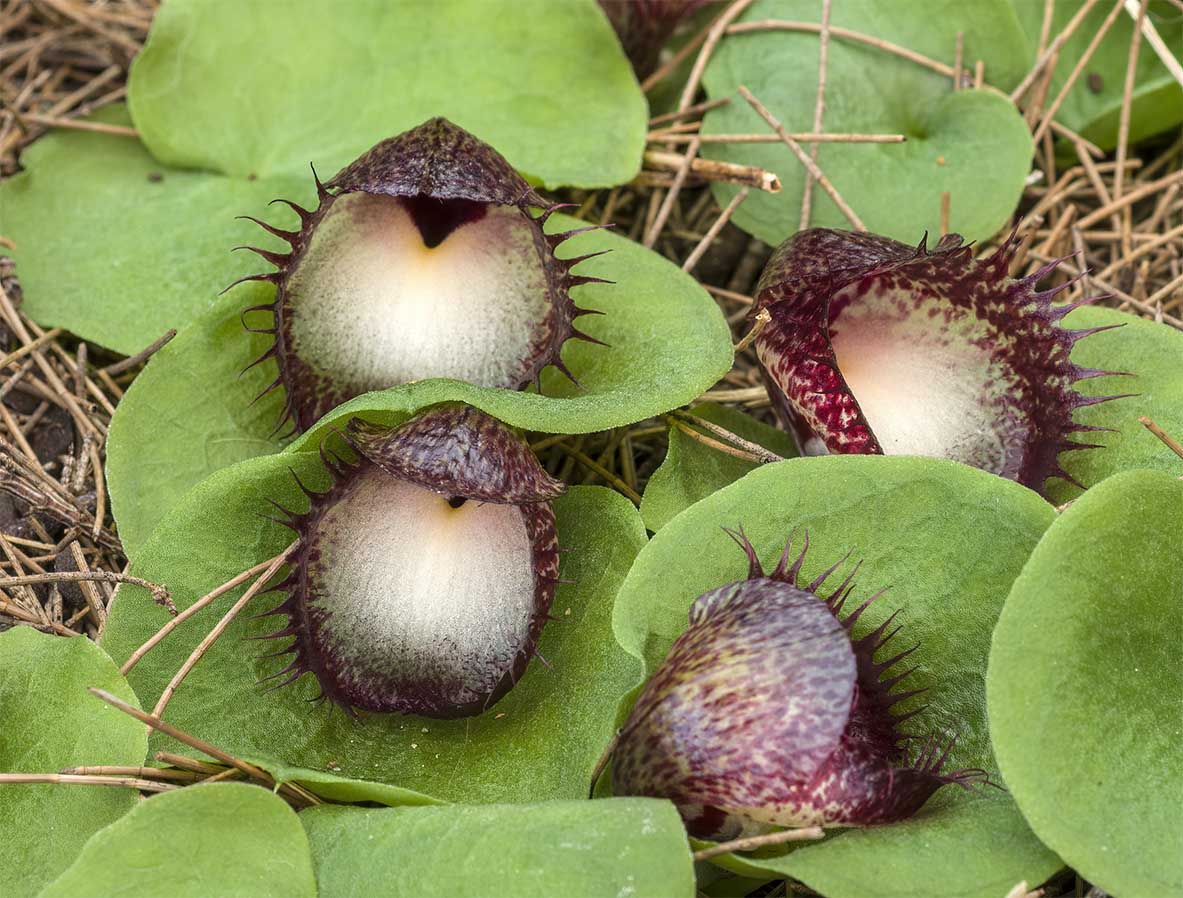
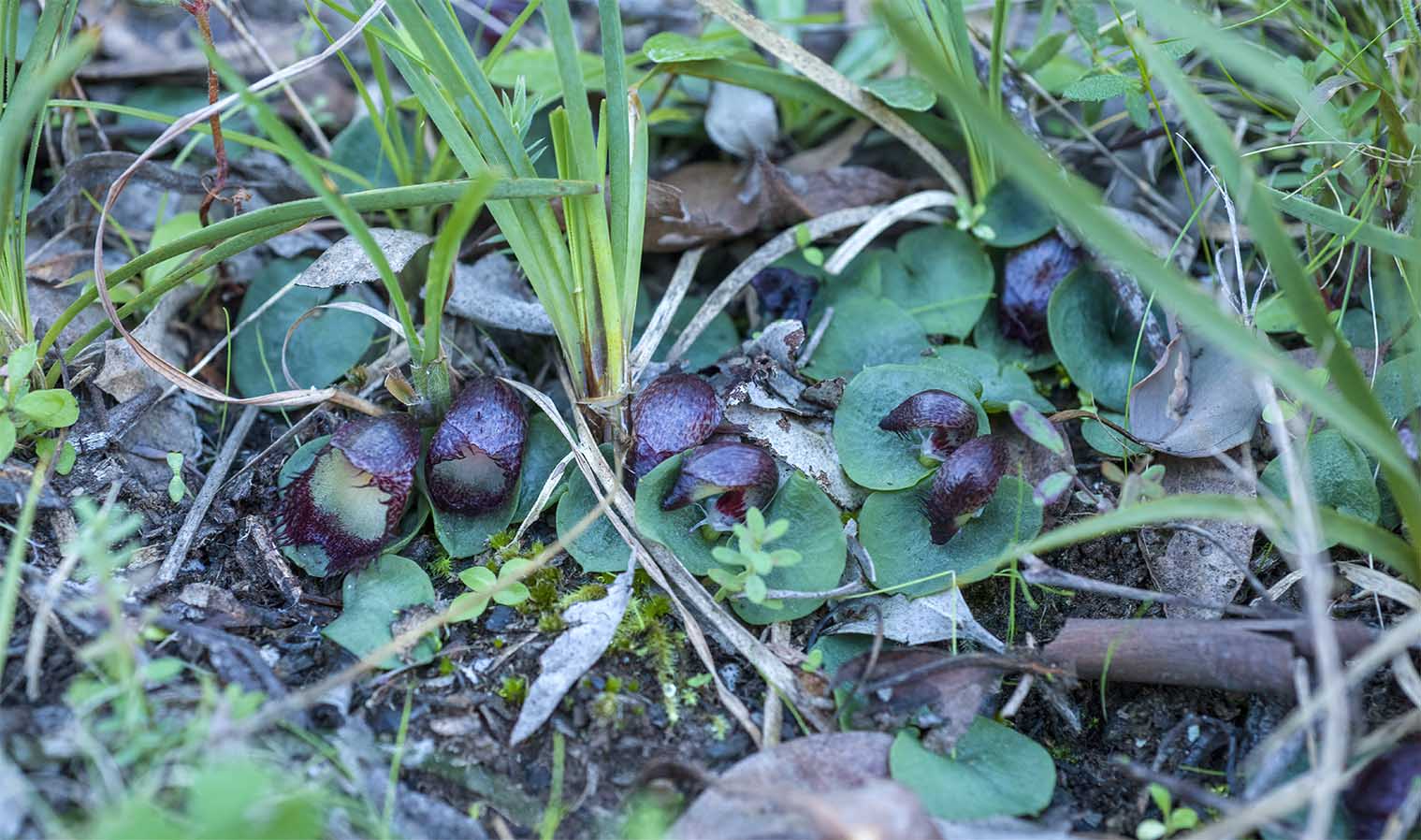
It is the most common and widespread of the three species in the ACT. They can be found in large colonies as can be seen here.
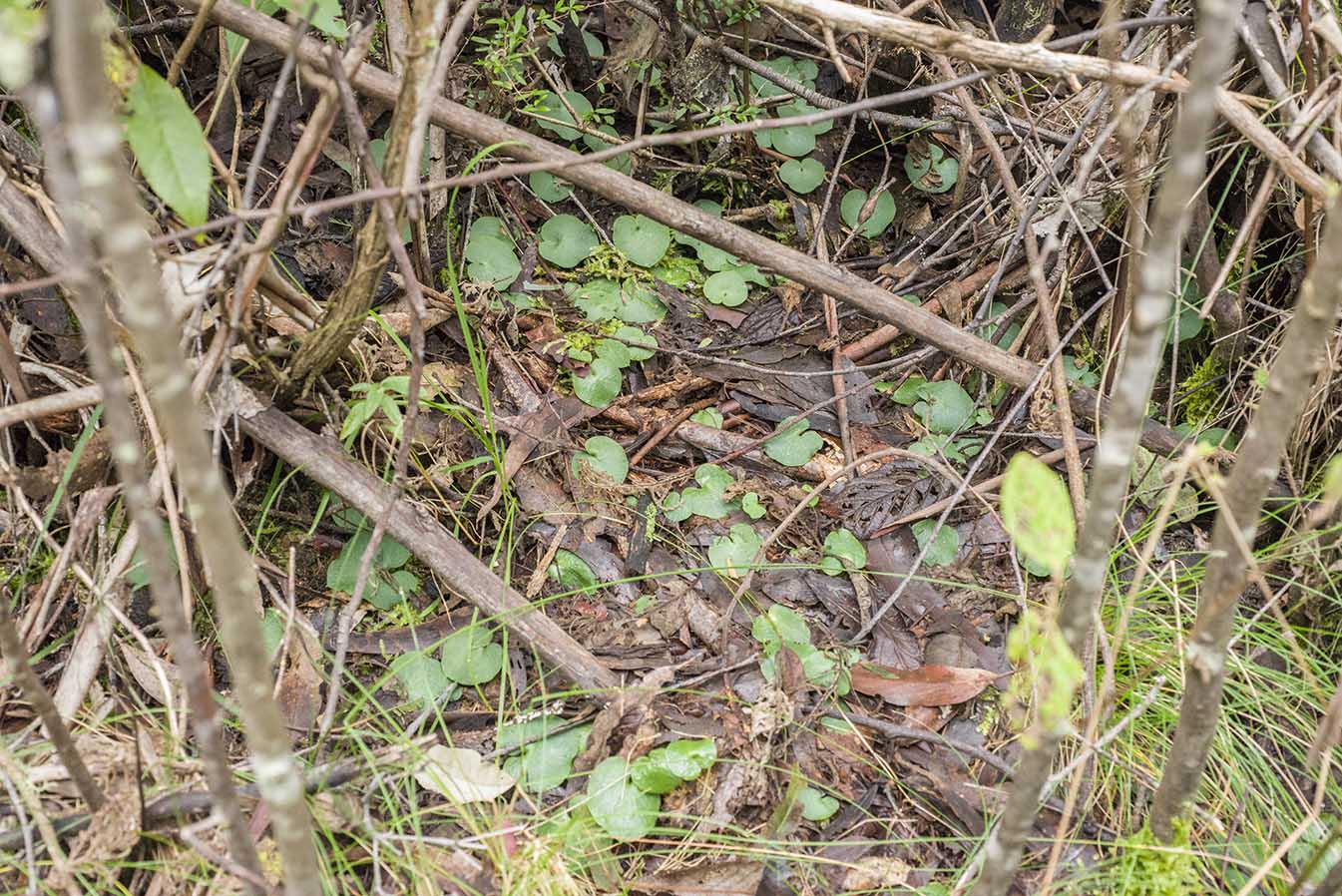
Mountain Helmet Orchid - Corysanthes grumula. The rarest of the three species. Seriously cute. It is the only one of the three I don't grow.


Slaty Helmet Orchid - Corysanthes incurvus. Commonly grown. Small in size.

Bristly Helmet Orchid - Corysanthes hispida. I have shown this one before. The most spectacular of the three species.


It is the most common and widespread of the three species in the ACT. They can be found in large colonies as can be seen here.

KyushuCalanthe
Just call me Tom
- Joined
- Jan 12, 2008
- Messages
- 8,181
- Reaction score
- 462
In situ! Me like!
Just wondering why you call them Corysanthes as opposed to Corybas?
Just wondering why you call them Corysanthes as opposed to Corybas?
emydura
Well-Known Member
In situ! Me like!
Just wondering why you call them Corysanthes as opposed to Corybas?
I have always called them Corybas myself. If you do a google search you mostly come up with Corybas. These were originally called Corysanthes in 1810 but then were lumped in with Corybas which had been named in 1807. In 2002, Coysanthes was reinstated as a distinct genus. A recently published book that I bought of local orchids refers to them as Corysanthes and the people I go surveying with does the same. I seemed to be the only person calling them Corybas. So I have joined everyone else and am now calling them Corysanthes.
Last edited:
emydura
Well-Known Member
A couple of species growing in situ not far from where I live. Sadly this location is ear marked for housing development, so they may be lost in the future. It is a lovely colony of Pterostylis nutans. This species is quite an easy one to grow and can multiply fast.
Pterostylis nutans - Nodding Greenhood
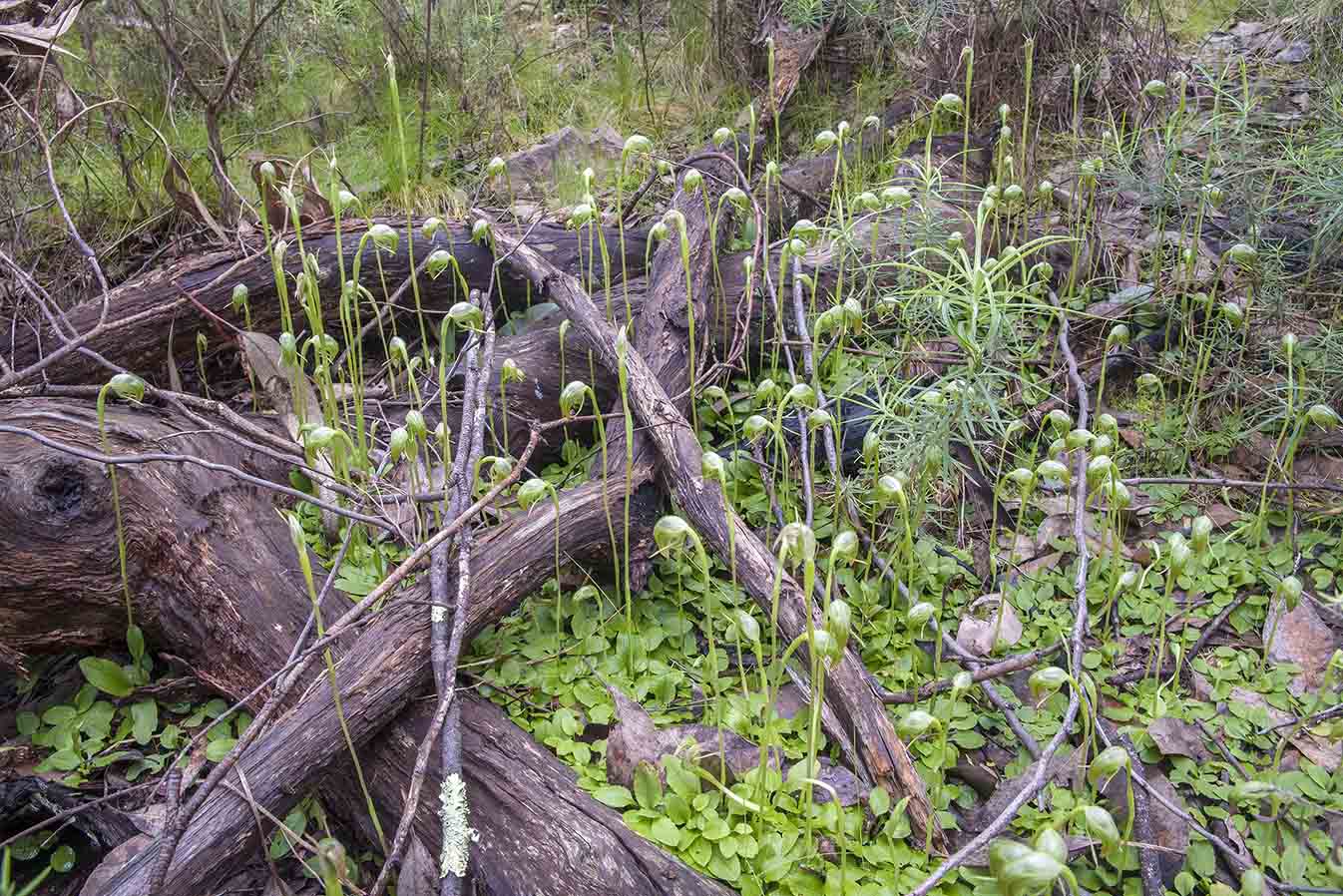
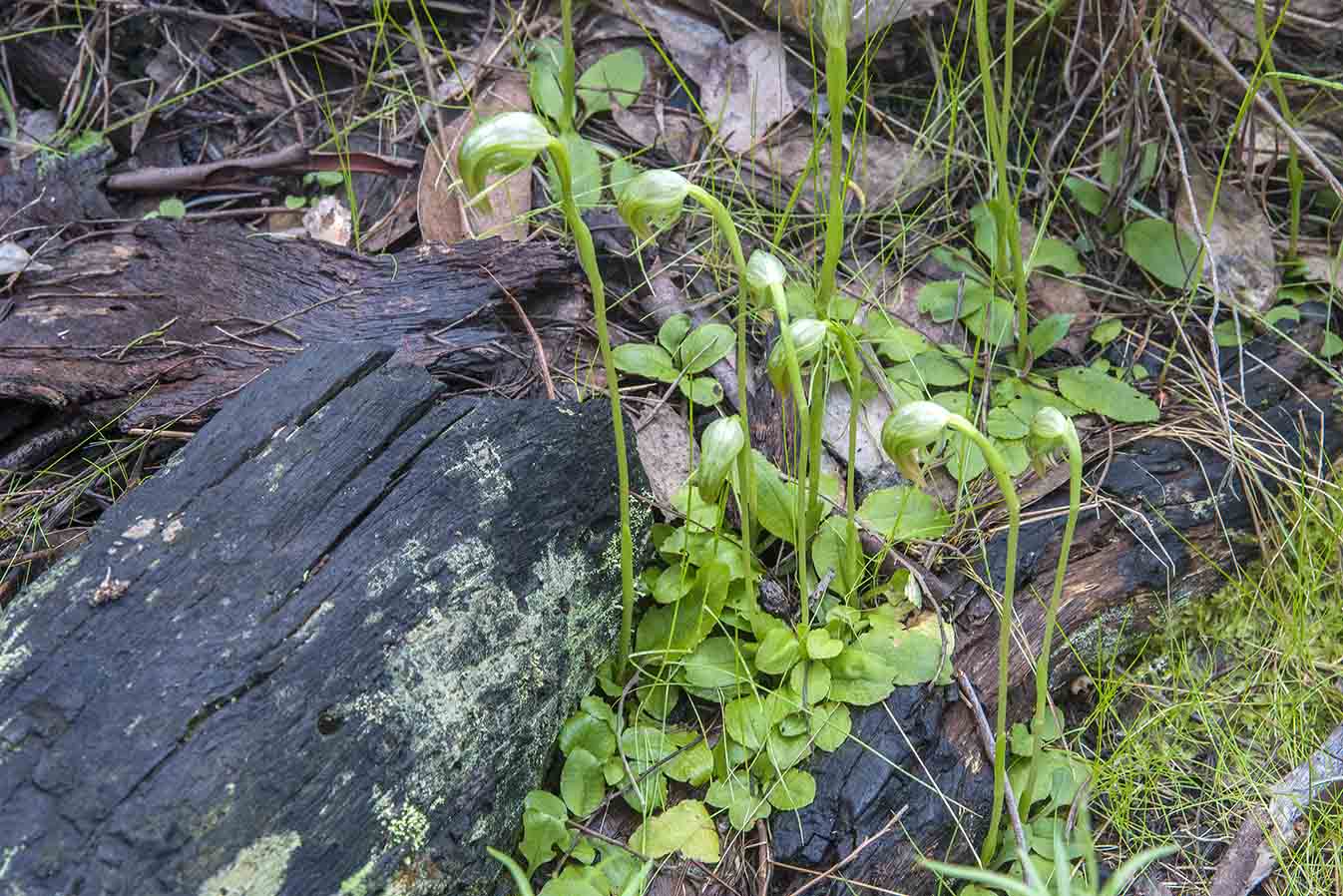
Caladenia caerulea - Blue Fingers
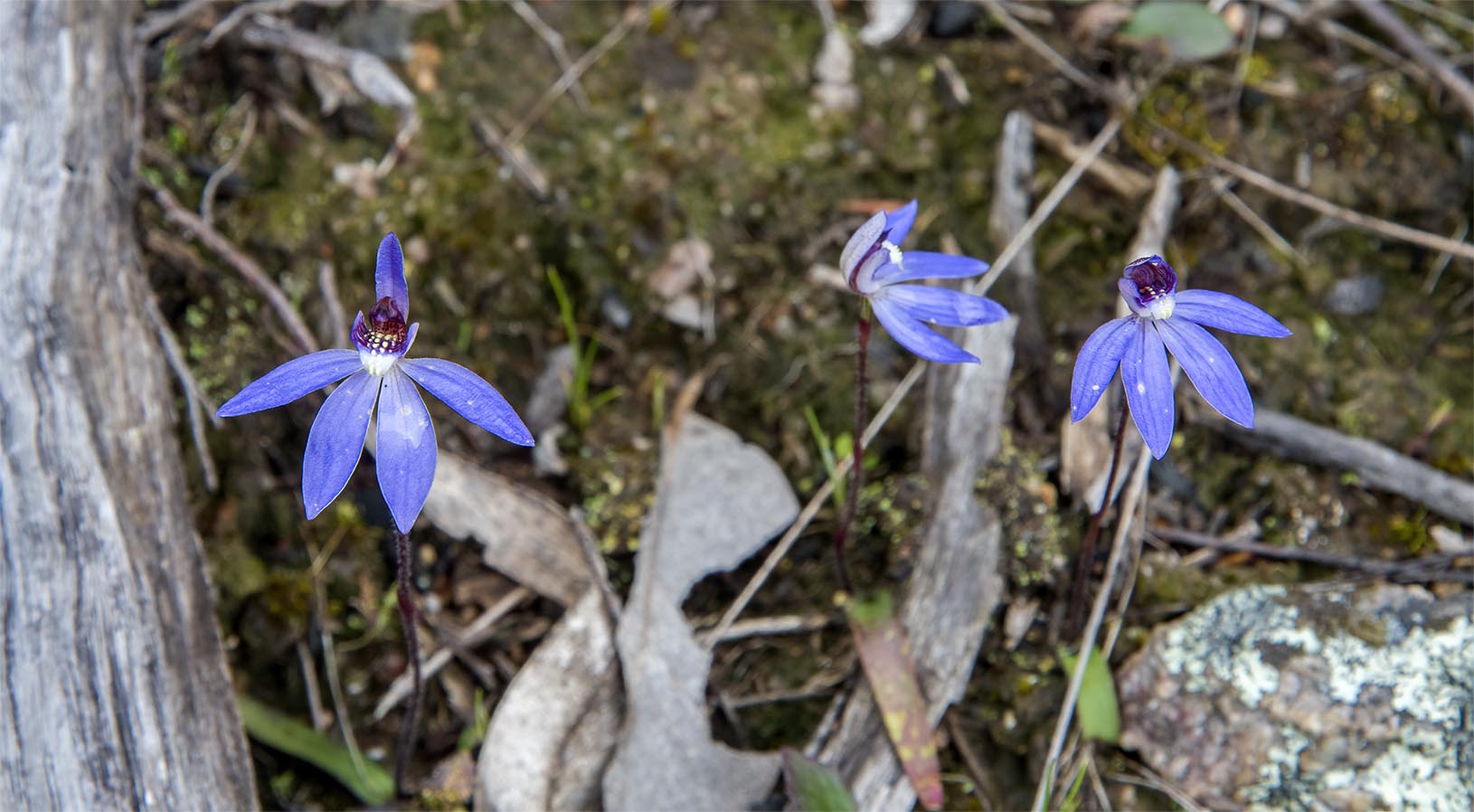
Pterostylis nutans - Nodding Greenhood


Caladenia caerulea - Blue Fingers

Last edited:
Great to see this plants in situ............Sadly this location is ear marked for housing development, so they may be lost in the future.......
emydura
Well-Known Member
.Does nobody care that there live protected plants in the earmarked area ?
The ACT is running out of land, and the population is growing, so land developers are keen to use any land they can get. This small parcel of land has some remnant forest so is quite valuable. All around it has been cleared. I think it is worth saving. I am currently involved with a group that is surveying the orchids in it over the next year. If we find any rare species then it may be possible to stop the development. The two species above are quite common, so these themselves won't help protect the area. There is a petition to the local parliament to try and get the land protected.
David, good luck and may your efforts be successful.The ACT is running out of land, and the population is growing, so land developers are keen to use any land they can get. This small parcel of land has some remnant forest so is quite valuable. All around it has been cleared. I think it is worth saving. I am currently involved with a group that is surveying the orchids in it over the next year. If we find any rare species then it may be possible to stop the development. The two species above are quite common, so these themselves won't help protect the area. There is a petition to the local parliament to try and get the land protected.
NYEric
Well-Known Member
They should be in a Park. Shame to lose them.
Might we see a photo, one of these days, of your championed Ausralian terrestial, David?
Fabulous photos, David and great commentary!
emydura
Well-Known Member
Might we see a photo, one of these days, of your championed Ausralian terrestial, David?
Ask and you will receive.
This is the variegated form of the most commonly grown species Pterostylis curta. The leaves are just stunning.
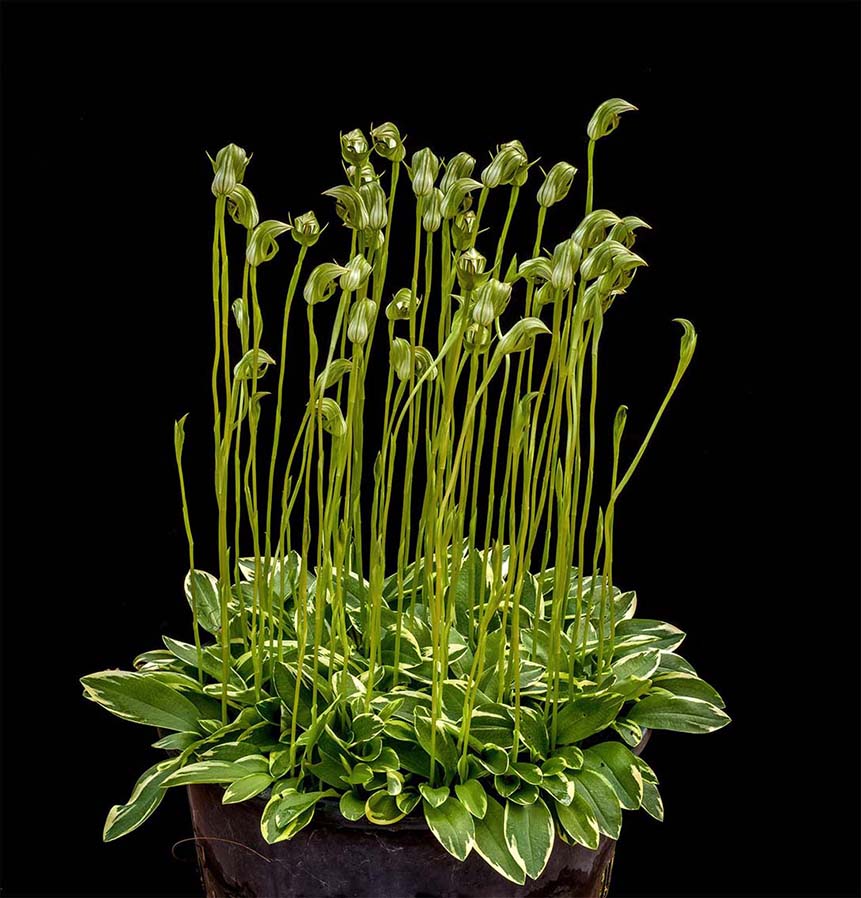
Last edited:
grow that for the leaves!
Wow that is amazing!
FlaskandFlora
Active Member
neat! I just received a bag of P. curta tubers in the mail today. What do you suggest planting them in? I can provide a wide range of temperature and humidity conditions for them, so whatever they need can be provided. Growing in Central Ohio, USA, Zone 6b.
emydura
Well-Known Member
neat! I just received a bag of P. curta tubers in the mail today. What do you suggest planting them in? I can provide a wide range of temperature and humidity conditions for them, so whatever they need can be provided. Growing in Central Ohio, USA, Zone 6b.
PterostyIis curta is pretty tolerant. It will grow well in most things. I grow my Australian terrestrials in a good quality seedling/cutting mix (Debco) which tend to drain well, which is important. I add a pinch of blood and bone to the potting medium. As for temperature, they are pretty cold tolerant. I grow mine outside here in Canberra, where it does get below freezing. They actually grow naturally in Canberra. But they do grow under a canopy, which protects them from the frost. My understanding is that Zone 6b is extremely cold, colder than what I experience. So I think this will be a bit too cold for this species. I dare say you are going to have to grow it in a slightly warmer protected area.
There is a lot of good cultural information at this link - CULTURE OF FAST MULTIPLYING (FM) TERRESTRIAL ORCHIDS
Thank you, David! And WAUW! What's not to like about it.. and what a specimen plant (plant looks pretty big, but I wonder, what is the pot size?). Kudos for culture!

Well, now knowing the full story, I think it was a smart move of the judges to choose another of your magnificent plants as champion of the show. Could be, I suppose, rather disencouraging for the rest of the lot with your Bel Royal going away with the prize every single time. And thinking of it, this choice even further cements your status as the (or one of the) undisputed mastergrower(s) of ACT, if not the Southern hemisphere![ My Bel Royal] ... flowers at this time every year. Fortunately always in time for our Spring show. It has won grand champion a couple of times previously, but last weekend it was beaten by [this] Pterostylis curta of all things.
Last edited:
PterostyIis curta is pretty tolerant. It will grow well in most things. I grow my Australian terrestrials in a good quality seedling/cutting mix (Debco) which tend to drain well, which is important. I add a pinch of blood and bone to the potting medium. As for temperature, they are pretty cold tolerant. I grow mine outside here in Canberra, where it does get below freezing. They actually grow naturally in Canberra. But they do grow under a canopy, which protects them from the frost. My understanding is that Zone 6b is extremely cold, colder than what I experience. So I think this will be a bit too cold for this species. I dare say you are going to have to grow it in a slightly warmer protected area.
There is a lot of good cultural information at this link - CULTURE OF FAST MULTIPLYING (FM) TERRESTRIAL ORCHIDS
Are your winters dry? In the US east coast, we have often wet cold winters (I'm supposedly in zone 6b also, but the last couple of winters were zone 8).
emydura
Well-Known Member
Thank you, David! And WAUW! What's not to like about it.. and what a specimen plant (plant looks pretty big, but I wonder, what is the pot size?). Kudos for culture!
Well, now knowing the full story, I think it was a smart move of the judges to choose another of your magnificent plants as champion of the show. Could be, I suppose, rather disencouraging for the rest of the lot with your Bel Royal going away with the prize every single time. And thinking of it, this choice even further cements your status as the (or one of the) undisputed mastergrower(s) of ACT, if not the Southern hemisphere!
Thanks Jens. I enjoyed your hyperbole.
I was told at our societies orchid meeting last night that the variegated form comes from Hastings down in Victoria. It is not too far from Melbourne. Apparently this is the only variegated form of the species.
emydura
Well-Known Member
Are your winters dry? In the US east coast, we have often wet cold winters (I'm supposedly in zone 6b also, but the last couple of winters were zone 8).
No, our winters are not dry. These terrestrial orchids like to be quite moist over winter. In fact, the Spring flowering species flower better after good winter rains.
Similar threads
- Replies
- 28
- Views
- 13K


